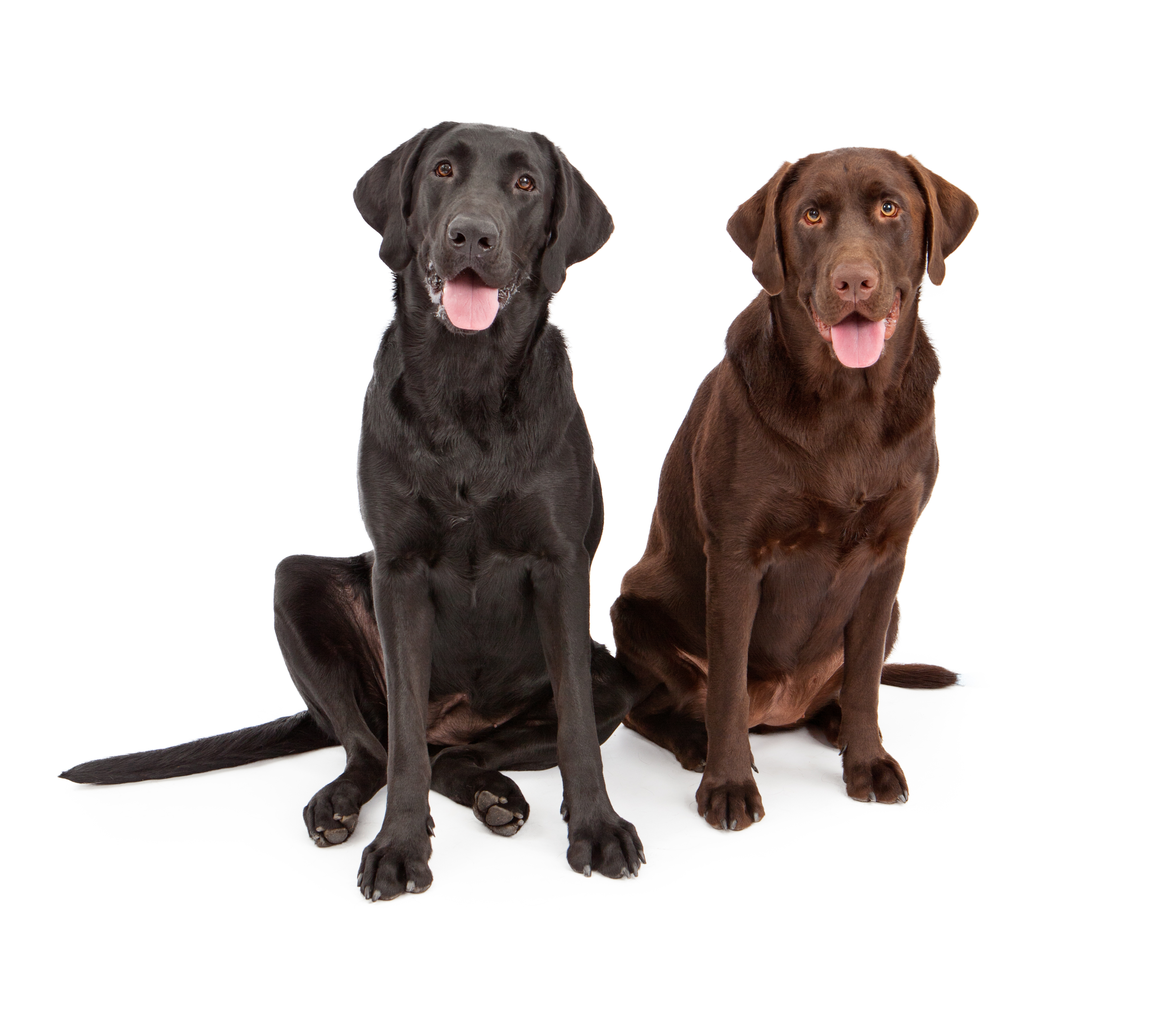Quick Summary
Click here for Price and Turnaround Time
Phenotype: Black pigment (if present) is diluted to brown; red/yellow dogs have brown noses and brown foot pads.
Mode of Inheritance: Autosomal recessive
Alleles: B = Full color, b = Brown
Breeds appropriate for testing: Many breeds
Explanation of Results:
- Dogs with B/B genotype are expected to express undiluted black pigment. They cannot transmit this brown variant to any of their offspring.
- Dogs with B/b genotype are expected to express undiluted black pigment and are carriers of brown. They will transmit the brown allele to 50% of their offspring.
- Dogs with b/b genotype are expected to express diluted black pigment. Black pigment (if present) is diluted to brown; red/yellow dogs have brown noses and foot pads. These dogs will transmit the brown allele to all of their offspring.
Results of this test can be submitted to the OFA (Orthopedic Foundation for Animals)
Dog Coat Color - Basic Panel (All breeds)
$100 per animal
Additional coat colors $15 per test
Dog Coat Color - Bulldog Panel
$80 per animal
Additional coat colors $15 per test
Dog Coat Color and Type - Havanese Panel
$115 per animal
Additional coat colors $15 per test
Sample Collection
Dog DNA tests are carried out using cells brushed from your dog's cheeks and gums. The preferred cytology brushes are sent to you by mail, or you may provide your own brushes. For accepted alternative brushes, click here
We recommend waiting until puppies are at least three weeks old before testing.

Step-By-Step:
- Make sure the dog has not had anything to eat or drink for at least 1 hour prior to collecting sample.
- When swabbing puppies, isolate each puppy from the mother, littermates and any shared toys for 1 hour prior to swabbing. Puppies should not have nursed or eaten for 1 hour prior to collecting sample.
- If collecting samples from more than one dog, make sure to sample one dog at a time and wash your hands before swabbing another dog.
- Label brush sleeve with name or ID of dog to be sampled.
- Open brush sleeve by arrow and remove one brush by its handle.
- Place bristle head between the dog’s gums and cheek and press lightly on the outside of the cheek while rubbing or rotating the brush back and forth for 15 seconds.
- Wave the brush in the air for 20 seconds to air dry.
- Insert brush back into sleeve.
- Repeat steps 5 - 8 for each unused brush in sleeve on a fresh area of cheek and gums. Make sure to use and return all brushes sent by the VGL. In most cases, it will be 3 brushes per dog. If using interdental gum brushes, please note that the VGL requires 4 brushes per dog and only moderate or wide interdental gum brushes are accepted.
- Do not seal brushes in sleeve.
- Place all samples in an envelope and return to the address provided.
ATTENTION:
- Do not collect saliva/drool – the key to obtaining a good sample is getting cheek cells on the swab
- Do not rub swab on the dog’s tongue or teeth – this will result in poor quality sample
- Do not collect a sample from a puppy that has recently nursed – the mother’s genetic material can rub off on the puppy’s mouth and contaminate the sample

The Brown gene (TYRP1), also called the B Locus, is responsible for brown versus black coat colors in dogs as well as many other mammals. In dogs, five different variants have been identified that contribute to brown. The VGL tests for the three most common found across breeds and uses the combination of the genotypes at each of these variants to define the alleles present. We report these as the dominant (B) and the recessive brown (b). Two copies of brown (b/b) are needed to change the appearance of eumelanin (black pigment) to brown in both hair follicles and skin. TYRP1 does not affect phaeomelanin (red/yellow pigment).
A dog must be homozygous for brown (b/b) and able to produce eumelanin (at least one copy of the E allele at MC1R) in order to express a liver/brown/chocolate phenotype. Because red or yellow dogs that are e/e at MC1R produce only phaeomelanin in their hair follicles, their coat color is not affected by the brown allele. However, two copies of brown (b/b) will change nose and foot pads from black to brown, even in e/e dogs with red or yellow coats.
Recently a variant in another gene was identified to cause the "non-testable chocolate" in French Bulldogs, known as cocoa.



